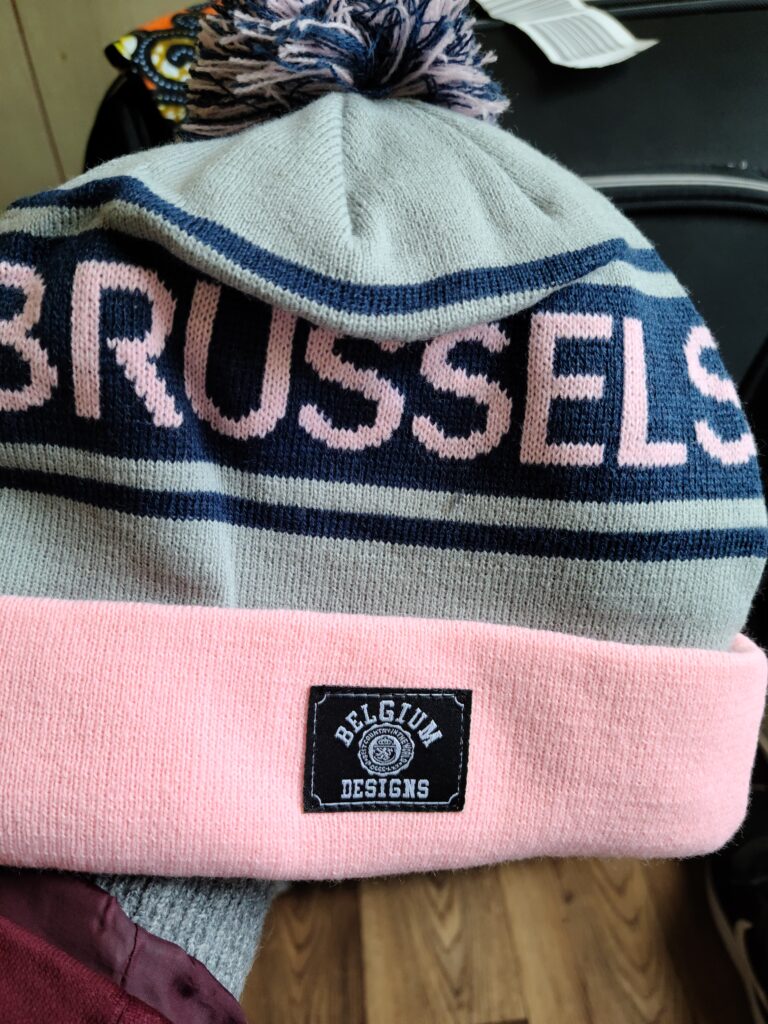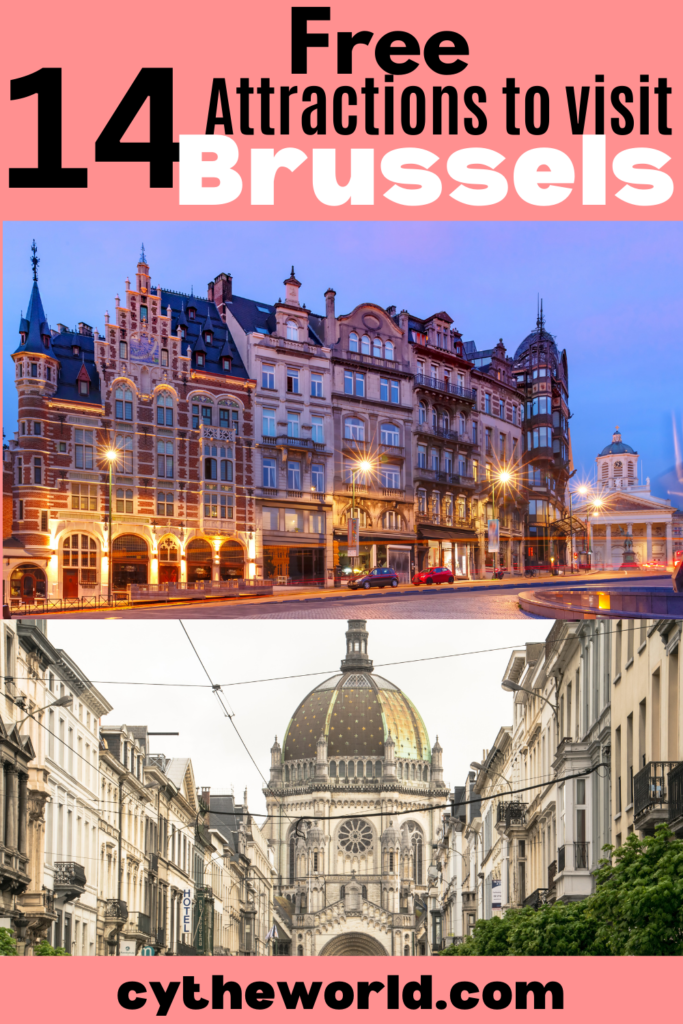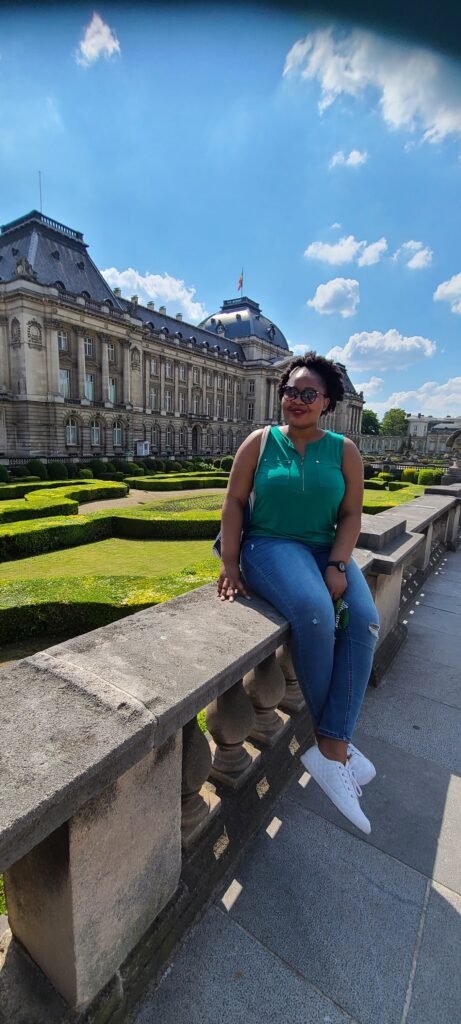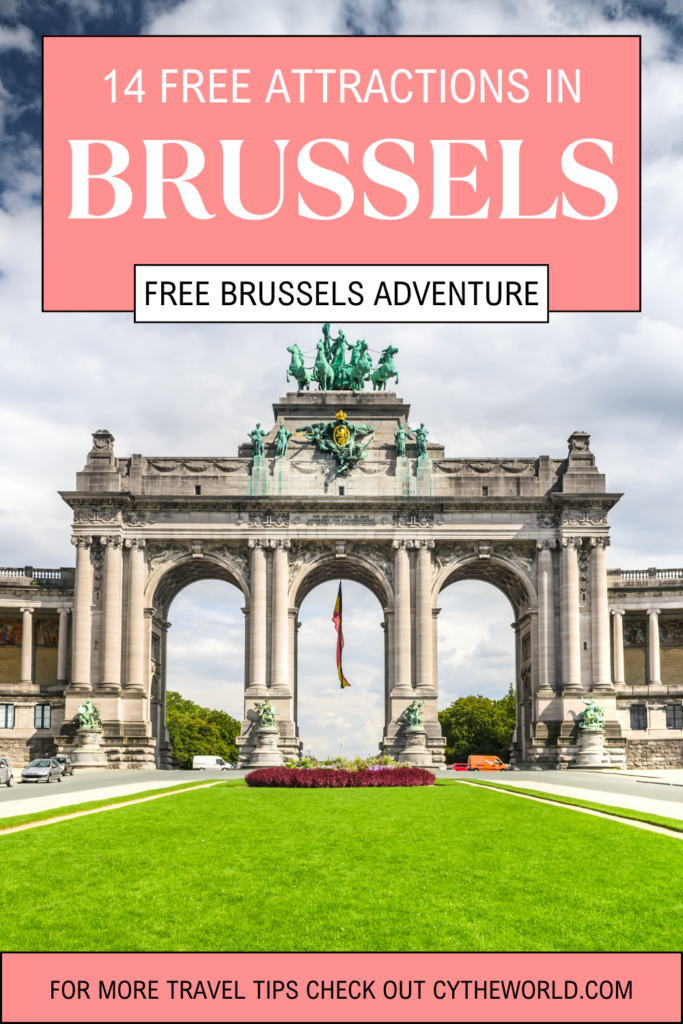People often say, “Money can’t buy happiness.” They say to find joy in the simplest things. As a traveler, especially as someone who started traveling as a college student with a small budget, learning that I could enjoy my time abroad for free allowed me to feel financially limitless. Although places like Shanghai were relatively cheaper than other cities I have been to, having access to free attractions helped me save even more money and have more cultural experiences than if entry to some destinations required money. As a young professional, you worry about whether you can afford to go abroad, and if you are a college student abroad on a fixed budget, even if the entry price is low, you might not attend such attractions because you need to weigh your needs versus your wants, making you miss out on fantastic adventures. Hence, I love traveling to cities where the most popular attractions are free. It enables one with a small budget or a young traveler with a limited budget to visit Versailles and enjoy the Louvre or enter the majestic Duomo di Milano. Free attractions allow you to enjoy expensive cities like the European capital, Brussels. Hence, it is vital to know what inexpensive activities you can do in such cities so that its status as an expensive city does not deter you from visiting. Let’s go on a journey to discover Brussels.

Welcome to Brussels
Although Brussels is often hidden because of its more famous neighbors, the European centerpiece has much to offer to locals and visitors alike. If you ask me which city I was more impressed by when I first visited between Paris and Brussels, I will tell you I preferred Brussels to Paris. Paris feels like New York City, and Brussels feels more like Washington, DC, or Boston. Of course, New York City is great, but it does not have a home feel when you first visit. You have limited space to walk freely or enjoy greenery unless you go to secluded suburbs. That is what it feels like to be in Paris. It is a city great for exploration, going on amazing adventures, and enjoying once-in-a-lifetime experiences. But Brussels is a city where you can live in. It is big enough to enjoy the trills of being in a city but small enough not to feel or get lost.
As someone who studied politics and international relations, Brussels offered more professional opportunities, another reason I was more impressed by Brussels than Paris. Although it holds so much power, it is a city that does not take itself too seriously. Belgians are friendlier than their neighbors, in my experience, and Bruxellois just go with the flow. As the center of Europe, many tourists pass through the town without taking the time to stay awhile and explore this great city. Hence, we highlight why you should travel to Brussels and provide a budget-friendly way to enjoy Brussels with 14 must-visit attractions you can visit for free. Before diving into the meat of our article, let’s discuss the history of Brussels.

History of Brussels
Like many capital cities, which are the centerpieces of their country’s history, Brussels, too, holds the key to Belgium’s history. Its history dates back to the 10th century when it was founded and became the Duchy of Brabant. Located on the Senne River, it helped with its development as it became the economic route linking Brussels to the Rhine, Cologne, Bruges, and Ieper. From the 12th to 14th century, it grew and became one of the vital towns of the duchy. Its trade business of exporting luxury fabrics to places like Paris, Champagne, and Venice boosted its economy. Like its neighbor Paris, Brussels was home to many uprisings where the working class rebelled against the ruling families. In 1430, the Duchy of Brabant merged with the Duchy of Burgundy(in France), bringing political and artistic prestige to present-day Brussels. However, the city knew many rulers who had overtaken the town and converted it into their likeness, creating many influences in Brussels and uprisings. These rulers included the Roman, Spanish, Austrian, French, and Dutch. After years of occupation and wars for liberation, Belgium won its final independence in the 19th century against the Kingdom of the Netherlands. Brussels became its capital city, as it had played a significant role in leading the uprising against its former occupiers. During the Great Wars, Germany occupied Belgium, and Brussels took charge of resisting Germans’ policy until the British came to liberate the city in 1944.

While once the battleground of political struggles, today, it is the epicenter of diplomacy, goodwill, and international collaboration. We do not think of wars or uprisings when we think of Brussels today. We think of a multicultural city with significant political influence worldwide as it is home to the European Union(EU), North Atlantic Treaty Organization(NATO), United Nations, UNESCO, and the World Health Organization, to name a few. It is a city of opportunity regardless of your field of interest. As one of the most diverse cities in Europe, it comprises 184 nationalities, with 104 languages spoken, making anyone from any part of the world feel welcome. However, Brussels is expensive due to its political prestige and attraction to big corporations like Meta, Google, and Microsoft. According to Why Brussels, it is more costly than Barcelona and Milan, cheaper than Amsterdam and Paris, but similar to living in Berlin. As a visitor and tourist who wants to experience all the city has to offer, the town ensures its status as an expensive city does not deter you from enjoying its most famous attractions. Hence, it provides free entry to many of its attractions. With MuseumPASSmusees, you get free entry to museums that require an entrance fee, ensuring even travelers on a budget benefit from their time in Brussels. Plus, the city offers you the option to discover Brussels with a free Brussels Greeter, ensuring you learn about the city from a local perspective and that you do so for free. Here are 14 free attractions to enjoy in the European capital.
14 Free Attractions
- Atonium Park
London has the Big Ben, Paris has the Eiffel Tower, and Brussels has Atonium Park. In the same way that you cannot go to Paris without seeing the Eiffel Tower, a visit to Brussels is incomplete without a visit to Atonium Park. The Atonium is a must-visit in Brussels for its cultural and historical value, unique architecture, panoramic views, and wonderful greenery. Built for the 1958 Brussels World Fair, it is based on iron unit cells magnified 165 billion times. You will get a panoramic view of Brussels inside the Atonium. As a cultural site, it hosts exhibitions about Belgium’s history and digital arts. Inside, you will feel like you are in a spaceship, walking through “astonishing spaces and volumes.” Also, there is a restaurant inside the Atonium, giving your dining experience another kick to it while enjoying the view of Brussels from 100 meters above the ground. However, visiting the inside of the Atonium requires purchasing a ticket for 16 euros for adults ages 18 to 64. If you are an international student, the ticket will be 8.50 euros.

If you are a student like me who visited Brussels a week after moving to Belgium, please skip paying to go inside. You can enjoy Atonium Park for free. Some travelers prefer the view of the Atonium from the outside than they do inside. From an Instagram generation, it is better to take a picture of you outside with the Atonium in the background than a picture of you inside, right? Since the Atonium Park is outside the city center, it provides a good break from city life. You can walk along the greenery, picnic, and take Instagrammable pictures. It is perfect for an afternoon getaway, a meeting with friends, or a spot for a date. It is the best free thing to do to relax, breathe, and meditate during your time abroad.
- Manneken Pis
When I visited Brussels for the first time and asked locals for directions and things to do and see, everyone told me to visit Manneken-Pis. I wondered what it was, and the vendor of the gift shop I spoke to showed me a souvenir of Manneken-Pis. I was baffled as to why I needed to visit a statue, and the vendor told me it was the mascot of Brussels, so I thought, why not? When I arrived at where the statue was, I saw many tourists surrounding this small statue as if we were at Trevi Fountain. There were so many people flashing the statue that every time I went to Brussels to get close, I never made it close, showing how popular this free attraction is to those who visit Brussels. So why should you see this figurine like many other tourists do, aside from being free?

Manneken-Pis is the de facto mascot of the city of Brussels. Created in 1619, the statue of the little boy pissing onto the fountain was simply to decorate the fountains that supplied the city with water during the Middle Ages. It has gone from mere decoration to a legendary figure that some view as a symbolic role of a protector and the spokesperson for Brussels. It embodies Brussels’s feeling of being “mischievous and irreverent.” Today, it represents the “rebellious yet modest spirit that reigns in Brussels.” On special occasions, it has become a tradition to ensure Manneken Pis is dressed for such occasions. He has a wardrobe of 1,000 pieces, which you can find in Garderobe MannekenPis, a museum dedicated to his attire. Although he has 1,000 customs, the museum only displays 150 customs and offers pop-up windows with different themes to see various customs. Every year, Manneken-Pis adds 20 to 30 more customs to his collections, ensuring you visit at other times to see what new attire this Brussels hero acquired. On the first Sundays of the month, museums are free in Brussels, attracting many people looking to take advantage of the FREE entry. Therefore, you need to book a ticket to ensure you can access the Garderobe Manneken Museum.
- Grand Place
The third free attraction you can enjoy while in Brussels is Grand Place. Located in the city’s center, everyone who visits Brussels will notice this UNESCO World Heritage Site. You can see the tip of the tower from afar, and when you get near, it is hard not to fall in love with the ambiance at Grand Place. People consider it to be the most beautiful square in the world. It started as a market square in the 12th century, and in the 15th century, the Gothic town hall was built, and there was an increase in the installation of trade guilds in the houses surrounding the market square. The square has been the center of Brussels’ life since its inception. It was the economic center as it was the place for many sale activities, a cultural center since it hosted plays and performances, and the center of judicial and political influence. Although Louis XIV’s army bombarded the square in 1695, the city rebuilt the square, and it underwent significant renovation during the 19th century, giving it its modern appearance.

Today, the square has maintained its economic, cultural, and political influence. You will find many restaurants and places to shop–buy souvenirs, clothes, and chocolate—and admire the architecture. The square hosts many events, including concerts and fairs, and is undoubtedly the home of the giant Christmas tree and nativity scene. Every August, it hosts a large flower carpet. Although you can buy souvenirs, food, and whatnot while on the square, walking around the marketplace is free leisure, and you can enjoy it in Brussels. You can go window shopping, make new friends, and admire the Gothic architecture. A few steps away, you can walk up the stairs to a beautiful park and enjoy a panoramic view from the stairs. Young people sit on the stairs with snacks and chocolate while overlooking the greenery and the tower of the Grand Place.
- NATO Headquarters
As mentioned multiple times, Brussels is a political giant. Like Washington, D.C., when you think of Brussels, you primarily think of political influence. One of the establishments that give Brussels its political reverence is NATO. NATO is a transatlantic alliance that includes 32 countries from Europe and North America; hence, the abbreviation NATO stands for North Atlantic Trade Organization. Its goal is to defend against rule-based international orders, working with various partners to address global issues like climate change, disinformation, and cyber-security. It is an alliance to promote cooperation, diplomacy, and democracy. In that vein, it hosts many events and allows young people to learn about its work. Visiting NATO will enable visitors to learn about international relations and policies that affect the world, not just individual countries. Young travelers and college students should visit NATO as it is a crucial establishment that influences their future. However, you need to take several security measures to see the building. You must submit an inquiry to the security officer of your nation’s delegate and detail the reason for your visit. For more information, visit the website.

- EU Parliament
Another influential political establishment to visit when in Brussels is the European Union Parliament. While at the parliament, you learn how European Union laws are made and learn the collaboration efforts that go to accommodate the 27 members of the European Union. At the Parlamenterum, an interactive 360 cinema allows visitors to role-play. You can take pictures in the photo booth and engage with what is happening at the parliament in real-time. At the Hemicycle, you can meet lawmakers and see how they debate and vote and the impact of their works on individual member states and the world. At the info hub, you can participate in talk events and exhibitions and make your voice heard by interacting with people of different backgrounds. It is a fun experience for political lovers or those curious about how the European Union works.
- Royal Palace
Although many people think only of the British royal family when discussing royals, Britain is not the only kingdom in Europe. There are 12 sovereign monarchies in Europe, and Belgium is one of them. If you think the British royal family has drama, think again. A simple Google search will reveal that the Belgian royal family will give them a run for their money. However, drama aside, the Belgian Royal family’s history is impressive, and history lovers will find it fascinating. Another fascinating thing about the Belgian royal family is its royal palaces. Palais Royal is the official palace of the Belgian royal family. It is the administrative palace where the royal family hosts state visits and diplomatic meetings. Due to its function, it is not easily accessible to tourists all the time. However, during the summer, It is open to the public from July 21, the Belgian National holiday, to September, and entry is free. People love this palace for its grandeur, architecture, and beauty. It was built between 1830 and 1934. It is a neoclassical style of architecture, surrounded by the Wandepark, which dates back to 1776. If you cannot make it inside the palace, you can still enjoy the exterior of the palace. Marvel at the greenery that boosts the palace’s beauty, and relax at the park, which contains impressive statues, water fountains, and ponds. If you walk a few steps north as if you are going to Matonge, you will get a panoramic view of the palace and the Grand Place.

- Royal Museum of Central African History
One of the highlights of visiting Brussels is learning the history of my country of origin, the Democratic Republic of Congo. The Royal Museum of Central African History showcases the Central African region’s beauty, culture, and history, mainly of the Congo. It provides ethnographic objects, natural science collections, historical archives, and photos. Permanent exhibitions have five themes: language, music, biodiversity, sustainable development, education, and colonial histories. Contemporary Congolese artists have a space to display their work. It is also a research center that helps to reparate Belgian colonial history in the Congo and Rwanda. It provides workshops for kids, so tourists should check out the websites and book activities you and your kids can enjoy. Although entry to this museum has a fee for different age groups, with a MuseumPass, you can enjoy the exhibitions for free! Like the Atonium and the Royal Palace, being outside the Central African Museum is as tourist-worthy as being inside. Since it is away from the city, it offers a break from the bustling city life. You are surrounded by nature and admire the architecture of the museum. The museum grounds are perfect for a picnic, a stroll, and relaxation.

- Comic Strip Trail
Did you know that Belgium is the birthplace of the comic strip? If you did not, now you know, and Brussels ensures that you enjoy the history of comic strips by taking you on a comic strip adventure with the Comic Strip Trail. Hang out with Tintin, Lucky Luke, and Spike while in their homeland. Although the city allows you to see its comic strip characters at museums, flea markets, and festivals, the Comic Strip Trail will give you a more thorough experience of all comic strips. Brussels streets have become murals with Comic Strips, adding the fun spirit of the comic strips everywhere you walk. This tradition that began in 1991 has given visitors 80 murals to admire. Tourists can go on the Comic Strip Trails from any five routes. The adventure will last about 3 hours and give you good walking exercises on the cobblestone street of Brussels. It is a fun activity to enjoy with friends and family members. Check out this map for your trail adventure.
- Mont des Arts Garden
Between the Grand Place and the royal palace lies the Mont des Art Garden. This beautiful, FREE public garden includes the Garden, the Royal Library of Belgium, and the National Archives of Belgium. It illustrated the city’s beauty, heritage, and artistic spirit. Regardless of the season, a visit to the garden is a must. The garden is the link that connects the upper part of town to the lower part of town. The main highlight from my perspective is the view. From the stairs, you get a panoramic of the garden, you see the tip of the Grand Place, and the view is even better when the sunrise and when it sets. Another reason this park is fantastic and provides a relaxing atmosphere is its architecture. Not only does the landscape fascinate anyone sitting at one of the park’s benches and looking down at the staircases, but the buildings surrounding it add to its beautiful aesthetics. It provides a tremendous experience of how inexpensive it is to enjoy this lovely, relaxing place.

- Brussels Cathedral
One thing that is true about cathedrals is that they exemplify humankind’s most creative and artistic talents, and a visit to Brussels Cathedral embodies just that. The Brussels Cathedral is the oldest in Belgium. It was built on Treurenberg Hill as a chapel to honor Saint Michael in the 9th century. In the 11th century, it was replaced with a Romanesque church, and two towers were added to the church in the 13th century. The church’s construction took 300 years and included different influences from different eras and takeovers. Although it existed for many years, It gained the title of cathedral in 1962. Visitors to the Gothic-style cathedral can enjoy many events, such as exhibitions and concerts. The cathedral also contains an archaeological site visitors can see with a volunteer tour guide. Due to how long it took to build the church and the many foreign influences, you will understand the versatility of the Church, making every turn of your visit mindblowing. You will find a baroque pulpit carved in 1699, statues, and beautiful stained glass windows. The general entry is free, but there are particular parts of the church where you must pay, but it is very affordable. If you want to see the cathedral’s treasure, you must pay 2 euros. The Crypt will cost you 4 euro, and the Archeological site will cost you 1 euro. However, you can still enjoy the church if you do not want to pay for the specific sights.

- Church of Our Lady of Victories at the Sablo
Another wonderful church to visit for free is the Notre Dame du Sablon Church. Built during the 15th and 16 centuries, the Gothic-style church has high arches and walls and colorful stained glass windows that light up at night, giving a beautiful view from outside the church. It contains a statue of Saint Hubert, the first bishop of Liege, whose legend says that he was visited by Saint Peter, who told him that God gave him the power against evil spirits. He was known to heal diseases. His statue at the Notre Dame was stolen from Brussels and sent to Antwerp but was returned to the church, where it has remained since then. The church is near a beautiful park, which ensures that after being amazed by the interior designs, you can come outside to sit by the garden and admire its exterior design. Its central location makes it easy to visit the Royal Palace, the Royal Museum of Fine Arts, and the Musical Instruments Museums, free to attend with a Brussels Card.
- 360° Free View of Brussels
One of my favorite ways to explore a new city is to have a panoramic view of that city. I love seeing the city from above. Seeing New York City from the top of the Empire State Building or the Rockefeller Center and seeing Barcelona from the cable car and Thessaloniki from the top of the hills are among my favorite memories of visiting those cities. My other favorite panoramic view was of Brussels. Since the city is divided between upper and lower towns, the opportunity to enjoy the view of the city from above is endless. Brussels has many rooftop bars with lovely panoramic views and no entry fees. You can sit by the vast spaces in the upper part of town with snacks, listen to music, or chat with friends. It is the perfect way to spend a solo adventure, meditating and admiring the city from above. In June 2023, the city hall opened its rooftop to the public, making it one of the largest rooftops in Europe. The intent of opening this rooftop to the public is for people to have a place to meet, exchange, and admire the culture around them. It provides a stunning city view, including the Atonium, Grand Place, Palais de la Justice, and Mont des Arts.

- Maximilien Park Farm
Do you love animals and nature? Do you want time away from the city life? Head to the Maximilien Park Farm for a beautiful detente with animals and nature. The farm is an educational farm that raises environmental awareness through fun activities and events. It features a vegetable garden, orchard, pond, and animals like ponies, donkeys, goats, sheep, hens, ducks, and more farm animals. There is a rainwater tank, lagoons for wastewater, solar water heating, and photovoltaic panels. Everything at the farm is there to blend nature into urban life sustainably. Tourists with children or not can enjoy activities such as feeding goats, collecting eggs, and milking cows. At the farm, you are encouraged to indulge in nature, participate in outdoor activities, and stay away from your phone. It is great for family activities or solo adventures.
- Sonian Forest
Lastly, the best free activity to enjoy in Brussels is a trip to the Sonian Forest. The 4,000-hectare natural reserve is excellent for outdoor activities and relaxation. The forest is home to various flora and fauna, old-growth oak, beech trees, birds, frogs, and fishes. Bird lovers will love bird watching, and tourists who love the outdoors can go hiking, running, or, if you are like me, simply walk around the forest. There are picnic tables and benches to relax and get in tune with nature. Although it is in the center of Brussels and is crossed by railroad, the forest provides an oasis away from the loud city life. It is beautiful and a perfect way to spend time for free in Brussels.

To conclude, although the capital of Europe is not famous for being a cheap city, it ensures that its visitors of all budget backgrounds can enjoy its beauty, culture, and history at an affordable price. Although some attractions have entry fees, through initiatives like the Brussels Card or the MuseumPass, you can enjoy many places free of charge with a one-time payment for purchasing the card or the pass. The free initiative on the first Sunday of the month also allows people to visit attractions for free. If you are a student in any European city, you have free entry or reduced price to ensure you experience the city on a small budget. However, you do not have to wait for the first Sunday of the month deal or purchase the Brussels card if you are not a student because most of the attractions and fun things to do and see in Brussels do not cost anything. From hanging out at beautiful parks, visiting stunning churches, and going to institutions like NATO and the Parlementerum, the capital of Europe delivers itself to you for free. All you have to do is take advantage of it, and I hope you will after reading this!
Thank you for reading! Leave a like, comment, and share!
Until next time, safe travels!
Xoxo,
Cy
Leave a Reply
You must be logged in to post a comment.